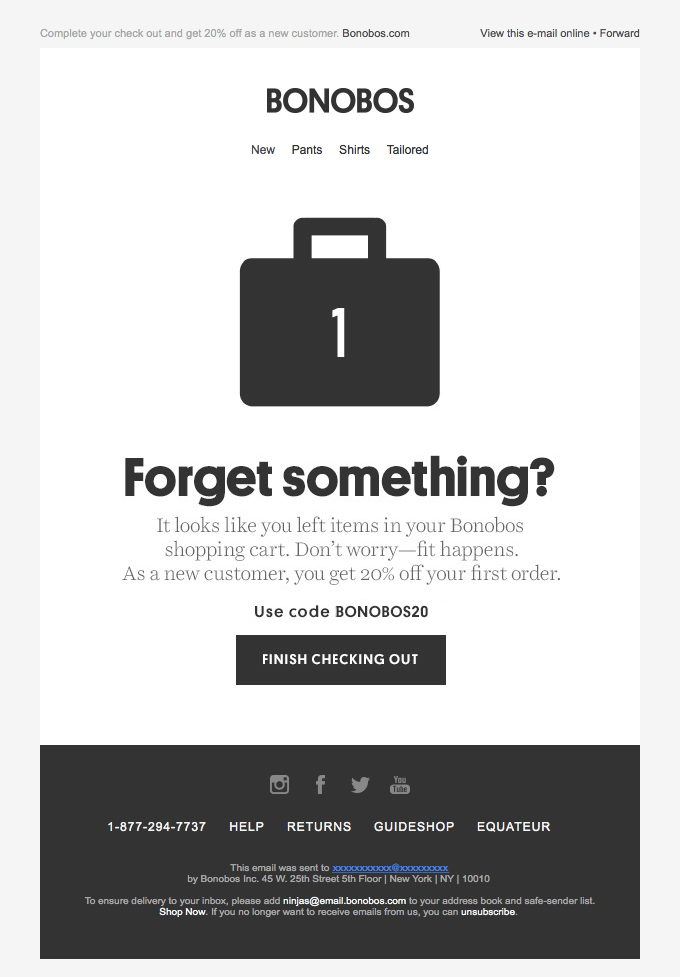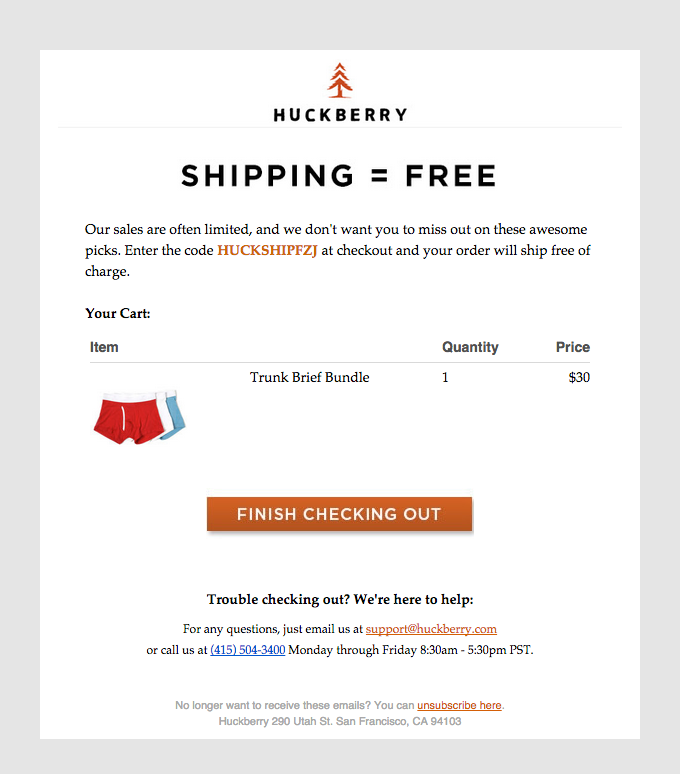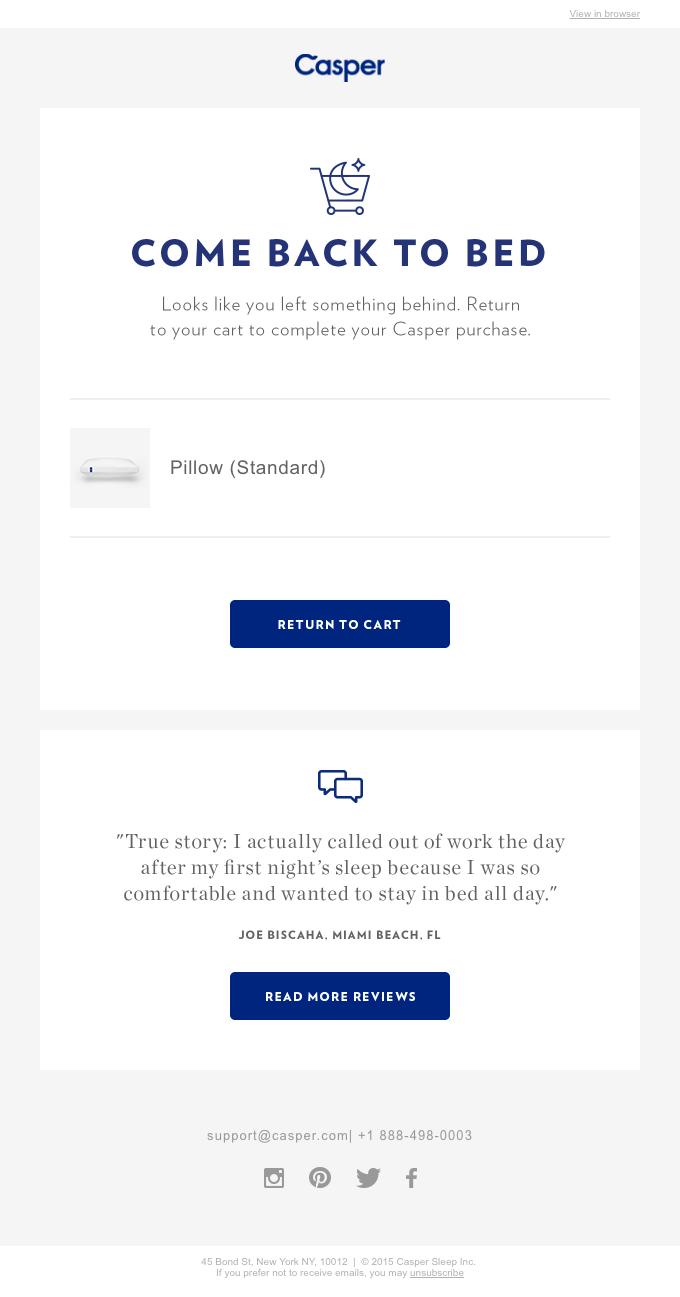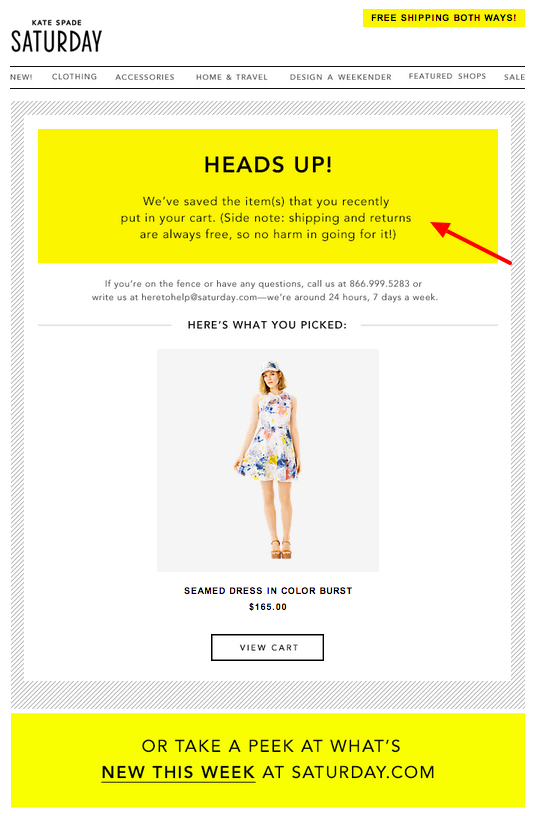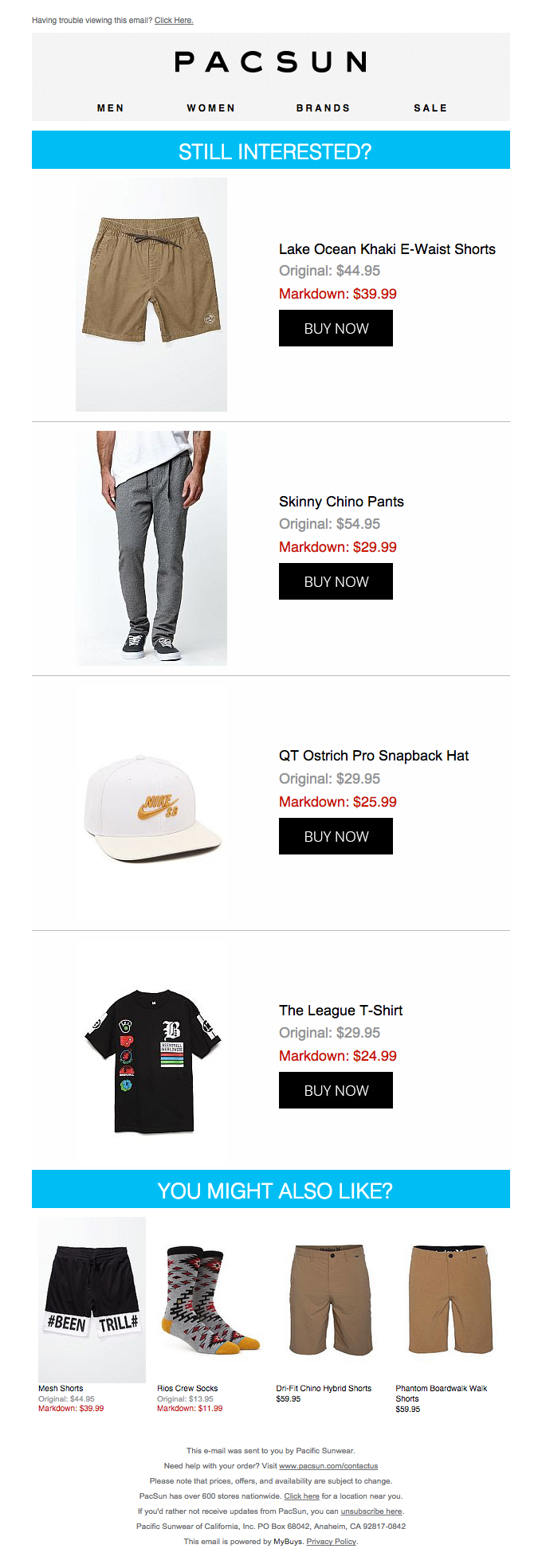It happens all the time. Shoppers fill their online cart but never checkout. A whopping 74% of shoppers abandon their cart, according to SalesCycle, which amounts to an annual loss of $18 billion for retailers across the globe. To try and recover some of these lost sales, many brands rely on cart abandonment emails. These emails remind customers about the items in their cart and provide a link to checkout.
Of course, to get customers to actually checkout, providing an incentive is usually the norm. While many brands add a coupon as an incentive, it's not the only option.
Before we dive into incentives, let's talk about why customers abandoned their carts in the first place and look at success rates of cart abandonment emails.
Why do customers abandon carts?
There are many reasons why carts are abandoned online, but research suggests the main reason is the cost of additional fees at the checkout. Fifty-six percent of consumers say the cost of shipping, taxes, and other fees force them to leave their cart, according to Statista.
Consumers are also looking for a fast, easy checkout. Research shows 35% of customers leave because they're forced to create an account before checking out, and another 27% left because the checkout process was too complicated, according to research from Baymard Institute.
Offering free shipping, or at least a shipping calculator, can cut down on the number of customers leaving, but the checkout process must be streamlined as well.
Do cart abandonment emails work?
There's a lot of debate about abandoned cart emails in the marketing world. Some marketers worry that using cart abandonment emails, especially those with a coupon as an incentive to buy, is bad practice. They fear consumers will grow to expect them.
Others focus on the short-term gain and are more than willing to send an abandoned cart email to land a sale.
Whatever side of the fence you're on, research shows abandoned cart emails do work. Abandoned cart emails, sometimes referred to as remarketing emails, result in 20 times the transaction rates and revenue per email compared to other bulk email messages.
In addition, abandoned cart emails that showcase the products that a customer was interested in generate 300% more online conversions compared to other emails sent.
To send a coupon or not?
Should your next cart abandonment email include a coupon? Research shows adding a coupon to your email is effective. Including a coupon does increase open and click-through rates, according to Experian. Open rates are 11% higher and click-through rates are 9% higher when an offer is included.
Coupons are hard to pass up and do encourage consumers to revisit your website and hit the checkout. In some cases, they might even add a few more items to the cart knowing they have a coupon.
Here's a great example of a cart abandonment email with a 20% off coupon:
Bonobos puts an interesting twist on the coupon: It's only for first-time customers. If you're worried about customers abandoning their cart on purpose just to get a coupon, mentioning that the coupon is for first-time customers or a one-time offer can curb the problem.
While coupons are effective, they aren't the only way to get consumers to cash out.
What incentives can you provide that aren't coupons?
Coupons might be the go-to choice, but if you think outside the box there are several other ways to nudge consumers to the checkout. Here are a few options:
-
Free shipping
Consumers like the idea of shopping online because it's convenient, but they aren't fond of shipping costs. To convince consumers to complete a purchase, consider picking up the shipping tab for them.
Nine out of 10 consumers say free shipping is their number one incentive to shop online. Giving customers free shipping can not only push the sale across the finish line, but 93% of shoppers say they're encouraged to buy more if free shipping is included.
Free shipping can get expensive, so it might not be something you can offer every customer. That's ok. Consider segmenting your email list and award free shipping to your most loyal customers, or to customers that have made a purchase from your company in the last month.
By segmenting the offer, your company can selectively decide who gets the deal all while keeping shipping costs down on your end.
Here's a great example of a cart abandonment email with a free shipping offer. It shows the items left in the cart, encourages the subscriber to checkout fast, and provides a code to get free shipping:
-
Reviews or testimonials
Sometimes consumers aren't 100% certain about their purchase and abandon their cart to think about it for a bit. This is especially true for larger purchases or niche products that aren't quite mainstream.
These shoppers are looking for a little reassurance. Instead of coupons or free shipping, consider adding customer reviews or testimonials to an email that focus on the product the customer left behind.
Eighty-eight percent of customers trust online reviews as much as personal recommendations, so why not help consumers find the information they're looking for? Create an email that includes customer reviews or quotes. This kind of social proof might be just what the customer needs to follow through with their purchase.
Here's an abandoned cart email that includes a quote from a customer. It's simple but effective.
-
Easy return policy
Some consumers are afraid of buying a product because they aren't sure they'll like it. They're scared to take a chance.
For instance, a woman searching for a dress to wear to a wedding might find exactly what she's looking for online, but she could be nervous about buying it because she can't try it on.
When an item is left in a cart, consider sending a cart abandonment email that explains your hassle-free return policy. Again, you're providing reassurance to the customer, letting him or her know that buying your product isn't a risk because it can always be returned.
Research shows 92% of consumers will buy from a brand again if their return policy is simple. In other words, you're not just encouraging one sale with this email, you laying the foundation for a long-term relationship that could result in repeat sales.
Here's an example of an abandoned cart email that encourages a consumer to buy a dress they left behind by mentioning free shipping and free returns.
-
Suggest other products
If consumers went to your site, checked out your inventory, and added items to a cart – you know they're interested. Sending an email highlighting these forgotten items is sometimes all it takes to close the deal.
However, many brands are taking advantage of the high open and click rates that cart abandonment emails have and suggesting additional items that consumers can add to their cart.
It's a unique kind of incentive that helps shoppers find items they might like. Now, customers not only check out with their previous purchases, but they can add to it.
Remember, customers want personalized emails. When you suggest similar items, customers feel as though the email was sent specifically to them. These kinds of personalized emails can result in transaction rates six times higher than traditional emails.
Here's a great example of a cart abandonment email that showcases the items left in the shopping cart, and also suggests a few other products at the bottom:
Ready to send cart abandonment emails?
To seamlessly add cart abandonment emails to your marketing strategy, make sure that you're working with an email service provider that offers cart abandonment emails. Not every email service provider does.
Cart abandonment emails can be automated. In other words, you can trigger an email to automatically send to a customer once the shopper leaves the cart. You can even set up a series of emails to arrive at different times.
For instance, one email could arrive an hour after the cart was abandoned that simply encourages the shopper to checkout. If the shopper doesn't take action, you could trigger an email that provides a coupon as an incentive.
Look for an email service provider like Pinpointe that offers cart abandonment emails and automation features. See how easy it is to set up cart abandonment emails with Pinpointe with these simple instructions.

